Horizonte
Wie schon in meinem ersten Kunstradio Aletheia geht es mir um rein zufällige Botschaften, die man mittels Codes entschlüsseln kann. Dieser Code nimmt die Form einer Abstraktion an, ich lasse manche Dinge außer acht und der Inhalt einer Botschaft wird frei gewählt. Dabei denke ich an Signale aus dem Kosmos, durch das das Hintergrundrauschen möglicherweise eingeschränkt, in denen Botschaften verborgen sein können.
Im selben Rohmaterial können aber verschiedene Botschaften verborgen sein, d.h., man kann aus einer Botschaft Bedeutung herausholen, was vorher nur Rauschen war. Durch Änderung dieses Codes kann die frühere Bedeutung sinnleer sein und umgekehrt. Zum Beispiel trifft bei den Horizonten das reine Licht von der Sonne (weiß, d.h., es enthällt alle Farben und Informationen) auf den Film im geöffneten Kameragehäuse auf, bevor es noch, wie sonst in der Fotografie üblich, von einem Gegenstand reflektiert und daraufhin fotografiert wird. Im weißen Licht sind alle Farben enthalten. Nur ein Prisma kann sie trennen oder der Geist des Betrachters. In diesem Fall gibt das Licht die Information des reflektierten Gegenstandes an den Film weiter.
Ich gebe als Code ein Filmmaterial mit einer bestimmten Spektralempfindlichkeit ein, und das Licht bildet sich selbst ab. An der Grenze zwischen geschütztem Film (in der Patrone) und ungeschütztem Film (außerhalb) bildet sich dann das Licht ab. Durch die Manipulation an den Filzhärchen der Patrone ergeben sich dann Horizonte. Ändere ich hier die Parameter (z.B. Infrarotfilm) wird aus Wüstenflimmern eine Eislandschaft.
• • •
Unüberwindlich ist der Horizont die Grenze der Erfahrbarkeit. Unphotographierbar das Licht, da ich doch mittels Licht Gegenstände abbilde. Am Kristallisationspunkt Horizont, der Differenz zwischen Erfahrbarem und dem Unerfahrbarem, werden virtuelle Wirklichkeiten erzeugt. Auch das Licht entsteht aus der Differenz zwischen zwei Materiezuständen, und offenbart seine Gestalt erst, wenn es auf die Grenze zwischen lichtgeschütztem und offenem Film trifft. Das Licht bricht wie eine Brandung an einer Küste aus Grenzflächen. Und an dieser Grenzkante offenbart sich nun die Wellennatur, die Teilchennatur, die Farbenpracht und all der ungestüme Charakter des Lichts. Es prägt sich selbst in den Film ein und legt in den Photographien dauerhaftes Zeugnis eines Augenblicks. Und dennoch treibt uns die Sehnsucht, den Horizont zu übersteigen, unweigerlich voran. Das Schneller, Weiter, Höher unserer Zeit findet nicht zu Letzt seinen Ausdruck in künstlichen Horizonten, denen die natürliche Sicht der Dinge schon lange nicht mehr genügt. Kein Flugzeug ohne einen solchen künstlichen Horizont, der dem Piloten selbst bei größter Desorientierung verrät, in welcher Lage sich sein Fluggerät und damit er sich selbst befindet. Die Fülle der Möglichkeiten um unsere beschränkte Weltsicht auszudehnen, liegen weit jenseits unseres geistigen Horizontes. Diese Horizonte sind Licht-Selbst-Portraits, Abbildungen des reinen Lichts, das alle Informationen in sich birgt und keinerlei Abbildung der Außenwelt. Wir sollten sie als Spuren sehen, die es zu entziffern gilt. Bedeutet das nicht, daß wir die Dinge bloß nach unseren Bildern erschaffen und daß nur in uns die Wirklichkeit ist?
Alfred J. Römer
Horizons
As in my first art radio programm Alitheia , I am dealing with purely random messages which can be deciphered by means of a code. This code assumes the form of an abstraction, and I ignore certain elements, allowing a random choice of the messages's contend. In doing so, I think of signals from the cosmos which may or not be limited by background noise and which may contain hidden messages.
In other words, one could find meaning in a signal which was at first nothing more than noise. Changing this code can destroy the meaning previously transmitted by the signal and vice versa. In Horizons, for example, the pure light of the sun (white; i.e., it contains all colours an information) comes into contact with the film in the open camera before being reflected off an object and photographed, as is the usual process in photography. White light contains all colours, and dispersion of this light is possible only in a prism or the observer's mind. In this case, the light passes the information from the reflected object to the film.
I enter film with a certain spectral sensitivy as a code, and the light is reproduced at the border between the protected film (inside the cartridge) and unprotected film (outside the cartridge). Horizons are then created through manipulation of the cartridge's tiny felt fibers. When these parameters are changed (with infrared film, for example), heat waves in a desert are transformed into an icy landscape.
Translated by Steve Wilder
• • •
On the Horizon, the point of crystallization, the difference between that which can be experienced and that which cannot creates virtual realities. Even light is a product of the difference between two material states, and this light reveals its form only after reaching the border between film which is exposed to light and that which is not. Light breaks like the surf on a bordering surfaces. And it is at the edge that the nature of waves, the nature of the particles, the glory of the colours and the wild character of the light are revealed. This light burns itself onto the film, creating a lasting record of a moment in the photograph. However, the desire to cross the Horizon pushes us along without a pause. The "faster, farther, higher" of our time is also expressed in Artificial Horizons, which require more than a natural perception of things. No aircraft is without this kind of Artifictial Horizons, which lets the pilot know the position of his plane, and therefore his own position, despite a state of complete dis-orientation. The number of possibilities for expanding our limited world view far surpass our Mental Horizon. These Horizons are self-portraits of light, images of the purest light which contain all information and are completely emty of reproductions of the outer world. We should regard them as clues which must be deciphered. Does this not mean that we create the world in our own image and that reality can only be found inside us?
Alfred J. Römer / Translated by Peter Lillie
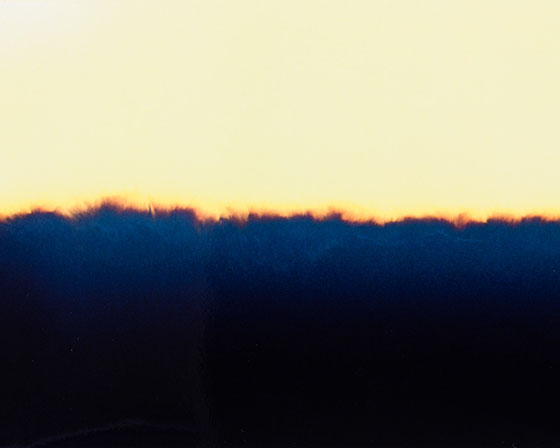
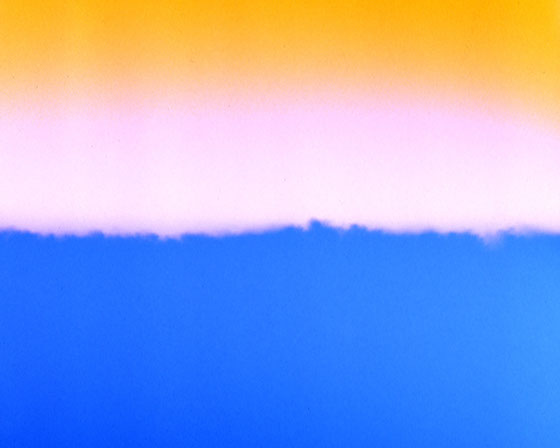
Horizont 22, C-Print auf Alu, 100 x 150 cm · 1995
Horizont 2, C-Print auf Alu, 100 x 150 cm · 1995
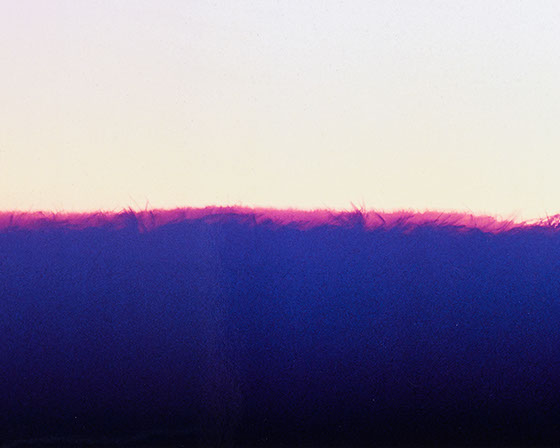
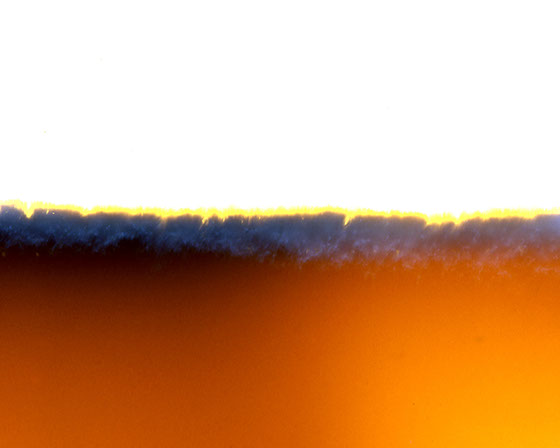
Horizont 5, C-Print auf Alu, 100 x 150 cm · 1995
Horizont 1, C-Print auf Alu, 100 x 150 cm · 1995
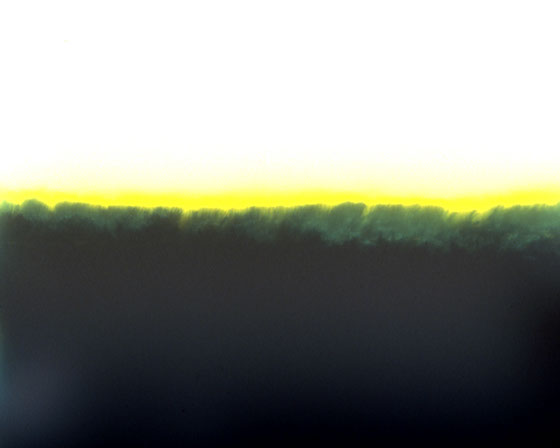
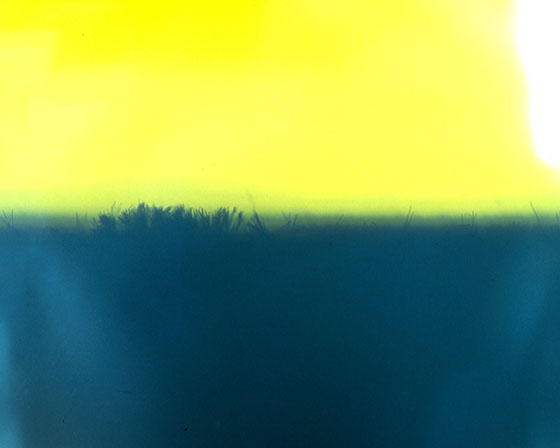
Horizont 3, C-Print auf Alu, 100 x 150 cm · 1995
Horizont 4, C-Print auf Alu, 100 x 150 cm · 1995